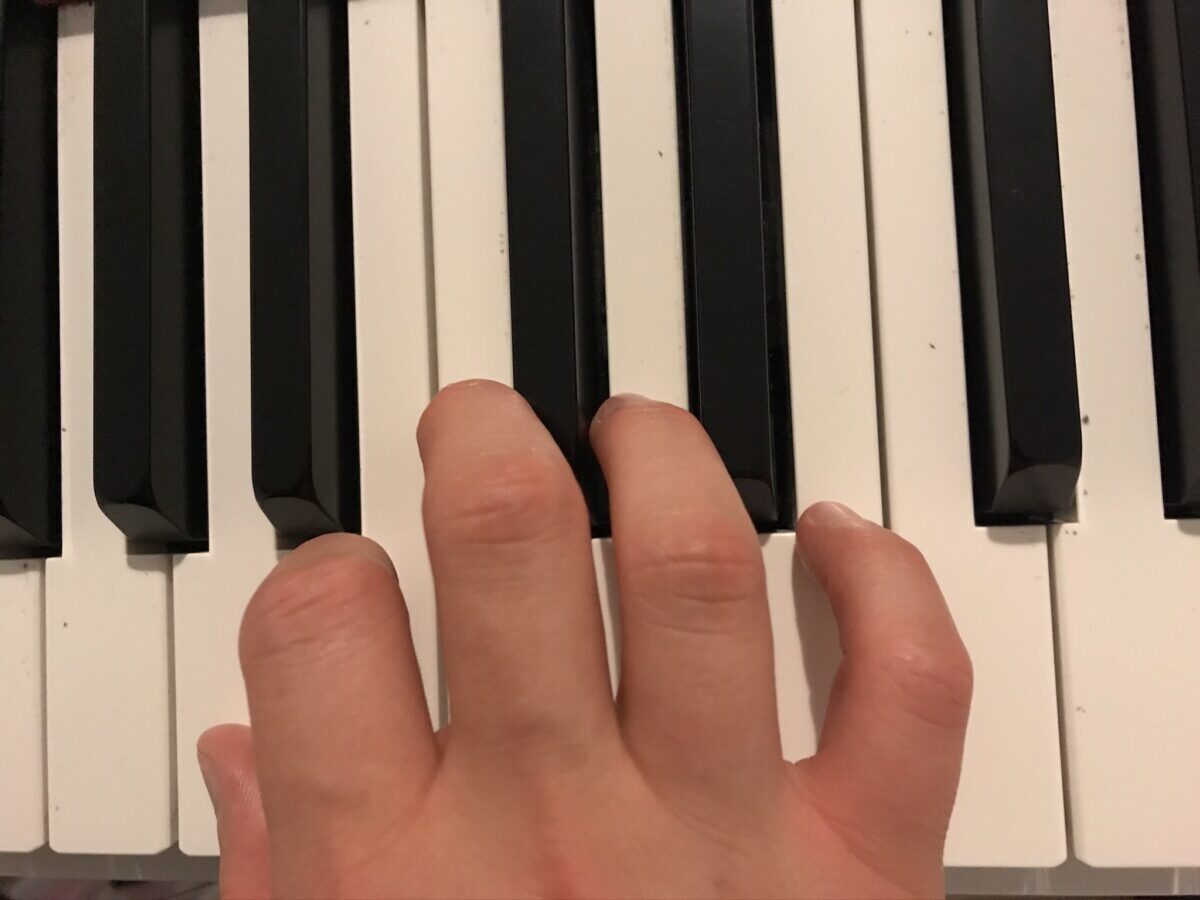Many pianists strive to play faster. Here are some of the most helpful techniques that I use with my piano students to help them improve the speed of their pieces.
How to Play Piano Faster
So how do pianists learn to play faster? Here are some techniques you can use to increase your playing speed. More info on each below.
- Practice extra slowly with a metronome
- Varied rhythmic practice
- Work backwards in small sections
- Practice starting from random places
- Get some piano lessons
- Ensure your fingerings are consistent
- Optimise fingerings for repeated notes
- Sleep
- Mental practice
- Stay relaxed
- Cheat tip: play on a grand piano if possible
Practice Extra Slowly with a Metronome
Often when we begin to learn a piece, there are some passages that we can play faster than others. The easiest way to get a whole piece faster is to start at the lowest common denominator speed – that is, a slow speed that you can comfortably play the whole piece at.
Using a metronome will ensure that you pick a speed that is slow enough that you can play the entire piece at that speed. You can get a free metronome app on your phone – the one I use is MetroTimer, but there are plenty to choose from.
When you can comfortably play the entire piece at your extra slow speed, you can increase the speed of the metronome by a few beats per minute at a time, and see if you can play the piece at the new faster speed. If you can, great – you can increase the speed by another few beats per minute. If you can’t, also great – practice at this speed until you can.
Chopin is said to have insisted on this as his primary method of teaching his students how to increase the speed of their scales, but it does require a bit of patience. The rest of the tips below will help you make your practice more interesting as well as helping you to play faster.
Varied Rhythmic Practice
I like to use different rhythmic techniques to secure the different finger combinations and make practice more interesting. You can take a passage of music and practice it with one or more of these changes:
- Play quaver or semi-quaver (eighth note or sixteenth note) passages as if they were dotted rhythms, or swung rhythms
- Play quaver or semiquaver (eighth note or sixteenth note) passages as if they were Lombardic rhythms (short-long, short-long, the opposite of dotted rhythms)
- Play two of every note i.e. instead of playing one crotchet (quarter note), play two quavers (eighth notes) of the same note
- Play two of every note, but in a dotted rhythm or Lombardic rhythm within each pair
- Play the passage emphasising every strong beat
- Play the passage emphasising every weak beat
- Do any of the above exercises but with every note staccato
These exercises reinforce the note patterns. When you return to playing “normally”, you should find that you can suddenly play faster than you could before.
Work Backwards in Small Sections
Often when we are trying to learn music or increase the speed, we start practising from the beginning, stopping to work on mistakes or difficult passages, and then start from the beginning again. This means that we end up being a lot more secure with the beginning of the piece than the end.
To counteract this, I like to start working on a piece at the end. I will take the last 2 bars or so, practice that passage at a faster speed until I am happy with it, and then go back a bar or two and do the same thing, playing from that bar to the end at a faster speed until I’m happy with it. I repeat this until I have worked backwards through the whole piece at a faster speed.
Practice Starting from Random Places
Often it is tempting to practice contained passages at a faster speed, but never join them up at the faster speed. What I mean by this is say you have two distinct phrases. Often people will practice one phrase until it is fast, and then practice the other phrase until that is fast, without practising the join at the new tempo.
It is a good idea to make a point of practising the connection between two phrases at an increased speed as much as you would practice the phrases themselves. Make a point of practising starting midway through a phrase and/or bar to make sure you know the music really well.
Get some Piano Lessons
With a lot of teachers you don’t have to commit to a whole string of lessons, and can just view it as a short-term troubleshooting solution instead, by hiring them to help with your goal of improving your playing speed.
Ensure your Fingerings are Consistent
There is no point spending loads of time practising if you are doing different finger combinations every time. Figure out early on in learning a piece or exercise which finger patterns are right for you, and then only play those every time you practice to ensure they are secure.
Optimise Fingerings for Repeated Notes
If at any point you are learning a passage that has a number of the same notes repeated in a row, try not to use the same one finger for all of those notes. This will allow you to stay more relaxed (see below).
A more optimal fingering choice for notes that are repeated is alternating between the thumb and middle finger (fingers 1 and 3), as if you were playing a trill but instead it is all the same note. Other options that can be useful in some situations are playing thumb, index finger and middle finger in a circle (fingers 1, 2, 3, 1, 2, 3,…), or the other way round (fingers 3, 2, 1, 3, 2, 1,…).
Sleep
Sleep plays a big role in consolidating all your efforts trying to play faster. As the sleep scientist Matthew Walker explains in his book Why We Sleep, getting a good night sleep the night before and the night after a practice session will enable you to retain a lot more of the enhanced skills that you worked on that day.
Walker also explains that practising every day, even in smaller amounts, is more beneficial than practising a lot all in one go, so that you can take advantage of every night’s sleep and balance out any negative effects of one night of poor sleep.
Mental Practice
If at any point you don’t have access to a piano, or even if you do and you just want to give your hands a break whilst actively working on improving your piano playing speed, then mental practice is a great alternative.
All you need to do is visualise yourself playing through the music, or just the challenging sections. No physical movement is needed for this exercise. Close your eyes and imagine your hands playing the phrases that you have been working on. Really try and “feel” the connection between the image of your hands and their contact with the piano keys. You can use all of the techniques discussed above, just mentally instead of physically practising.
This technique was developed by sports scientists to enable elite athletes to continue to train their skills even when their bodies were physically resting. As musicians we are able to access this same benefit.
When you return to physical practising, your technical ability including your ability to play at speed will have been improved.
Stay Relaxed
Sometimes people think that if they tense up, that will enable them to play the piano faster. The pianists in the Guinness Book of World Records videos above sure looked really tense! In reality though, it is always better to stay relaxed when playing, even when playing fast.
Cheat tip: Play on a Grand Piano if Possible
When playing past a certain speed, upright pianos may limit the speed at which you can play repeated notes.
In upright pianos, the hammers are vertical. This means that when a note is played, springs are used to return the hammer back to its resting position. The time it takes for this to happen limits the number of repeated notes that can be played to about 7 per second.
With grand pianos, because the hammers are horizontal, their own weight and gravity can be used as part of the mechanism. This enables notes to be repeated at a rate of around 14 per second, twice as many as an upright piano is capable of!
It’s not generally a good idea to blame your instrument, but if you feel like you are doing everything right and not getting a fast enough note-repetition speed on an upright piano or keyboard, then this may well be why.
If you want to see some of the world’s fastest pianists, check out my other article here:

